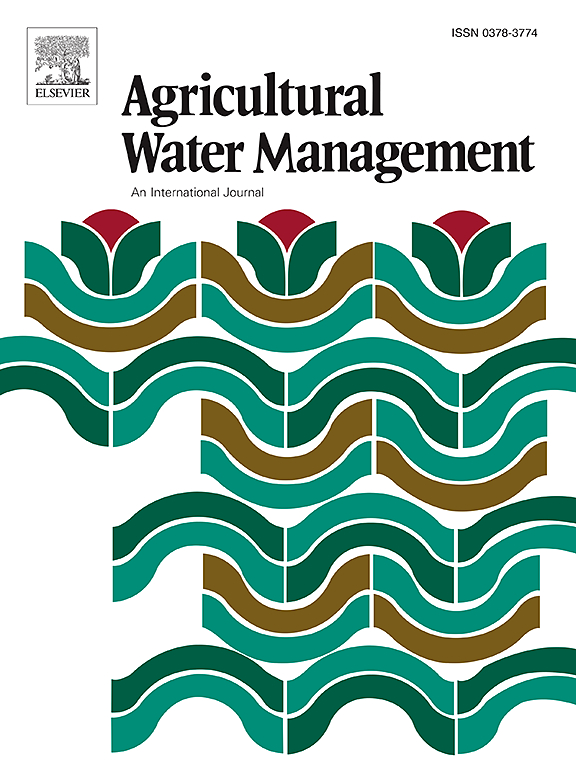通过对干旱地区水市场的新评估,将农业用水管理、经济学和政策结合起来,促进气候适应
IF 6.5
1区 农林科学
Q1 AGRONOMY
引用次数: 0
摘要
针对灌溉农业的灵活政策对于适应气候变化至关重要。尽管这一目标非常重要,但很少有公开发表的著作对灌溉农业的综合优化框架进行概念化、制定、开发和应用,以指导适应与气候相关的用水压力。本研究要解决的问题是:如何设计灌溉农业的水资源管理计划,以最大限度地减少因适应气候引起的水资源压力而造成的经济损失?本研究通过开发一种优化方法来回答这一问题,该方法可确定用水模式,以在缺水期间将农业收入损失降至最低,同时考虑到三种缺水分担方案。采用正向数学编程校准优化模型,复制历史土地使用情况,同时适应偏离历史模式的未来供水。分析以北美格兰德河流域的两个灌溉区为重点,说明了土地利用、用水和种植模式,这些模式可最大限度地减少短缺造成的地区农业经济损失。在三种分水策略下对这些损失进行了评估:作物间和区际交易(IIT)、作物间和区内交易(IRT)以及无交易(NT)。结果表明,与 NT 相比,IIT 平均每年产生 282.4 万美元的经济收益,而 IRT 平均每年产生 2600 万美元的经济收益。这些研究结果为水资源管理者、科学家、利益相关者和政策制定者提供了宝贵的见解,他们的任务是为面临未来供水挑战的干旱地区制定灌溉管理战略。本文所展示的方法和结果突出了一条前进之路,即利用科学、经济和政策创新,在面临不确定水资源供应的地区加强农业生计。本文章由计算机程序翻译,如有差异,请以英文原文为准。
Uniting agricultural water management, economics, and policy for climate adaptation through a new assessment of water markets for arid regions
Flexible policies aimed at irrigated agriculture are essential to adapt to climate change. Despite the importance of this goal, little published work has conceptualized, formulated, developed, and applied an integrated optimization framework for irrigated agriculture to guide adaptation to climate-related water stress. This research addresses the question: how can water management plans for irrigated agriculture be designed to minimize economic losses caused by adapting to climate-induced water stress? The study answers this by developing an optimization approach that identifies water use patterns to minimize farm income losses during water shortages, considering three water shortage sharing programs. An optimization model, calibrated using positive mathematical programming, is applied to replicate historical land use while adapting to future water supplies that deviate from the historical pattern. The analysis focuses on two irrigated regions in North America’s Rio Grande Basin, illustrating land use, water use, and cropping patterns that minimize regional farm economic losses to shortages. These losses are assessed under three water-sharing strategies: intercrop and interdistrict trading (IIT), intercrop and intradistrict trading (IRT), and no trading (NT). The results demonstrate that IIT yields an average economic gain of $2.824 million per year, while IRT results in an average gain of $2.600 million per year compared to NT. These findings offer valuable insights for water managers, scientists, stakeholders, and policymakers tasked with developing irrigation management strategies in arid regions facing future water supply challenges. The methods developed and results shown here highlight a path forward, using scientific, economic, and policy innovations to strengthen agricultural livelihoods in regions facing uncertain water availability.
求助全文
通过发布文献求助,成功后即可免费获取论文全文。
去求助
来源期刊

Agricultural Water Management
农林科学-农艺学
CiteScore
12.10
自引率
14.90%
发文量
648
审稿时长
4.9 months
期刊介绍:
Agricultural Water Management publishes papers of international significance relating to the science, economics, and policy of agricultural water management. In all cases, manuscripts must address implications and provide insight regarding agricultural water management.
 求助内容:
求助内容: 应助结果提醒方式:
应助结果提醒方式:


